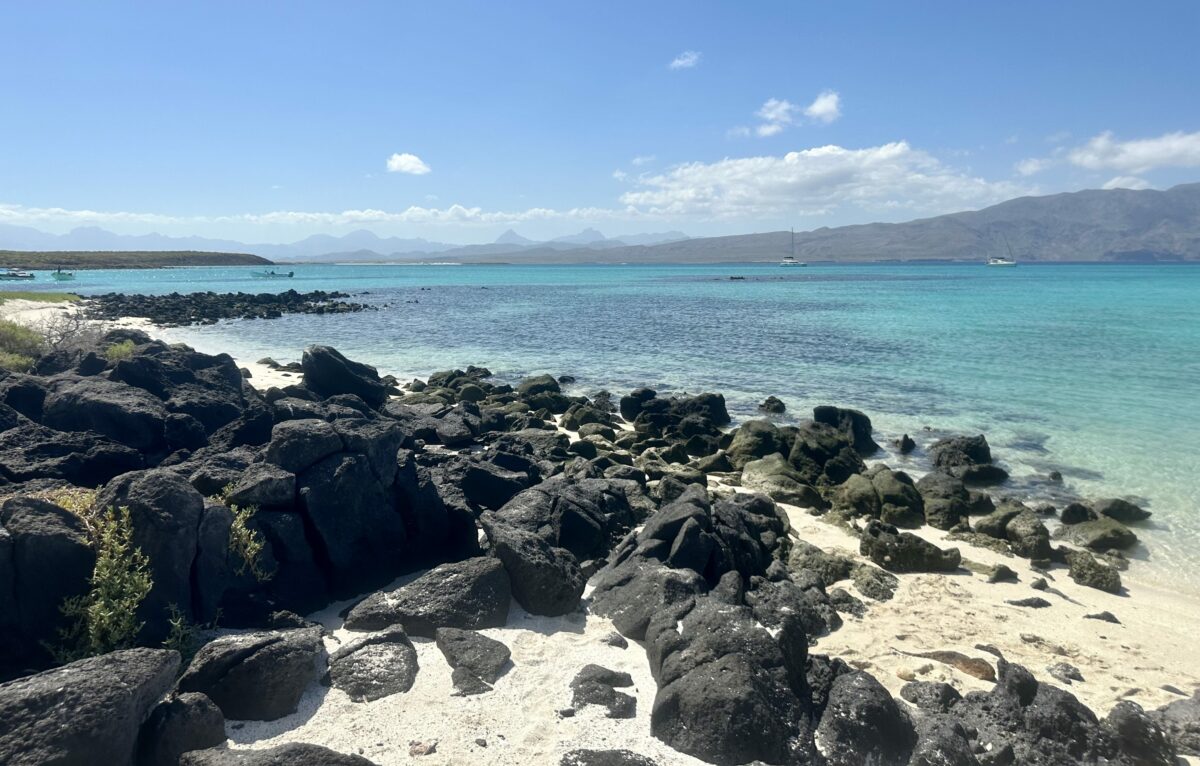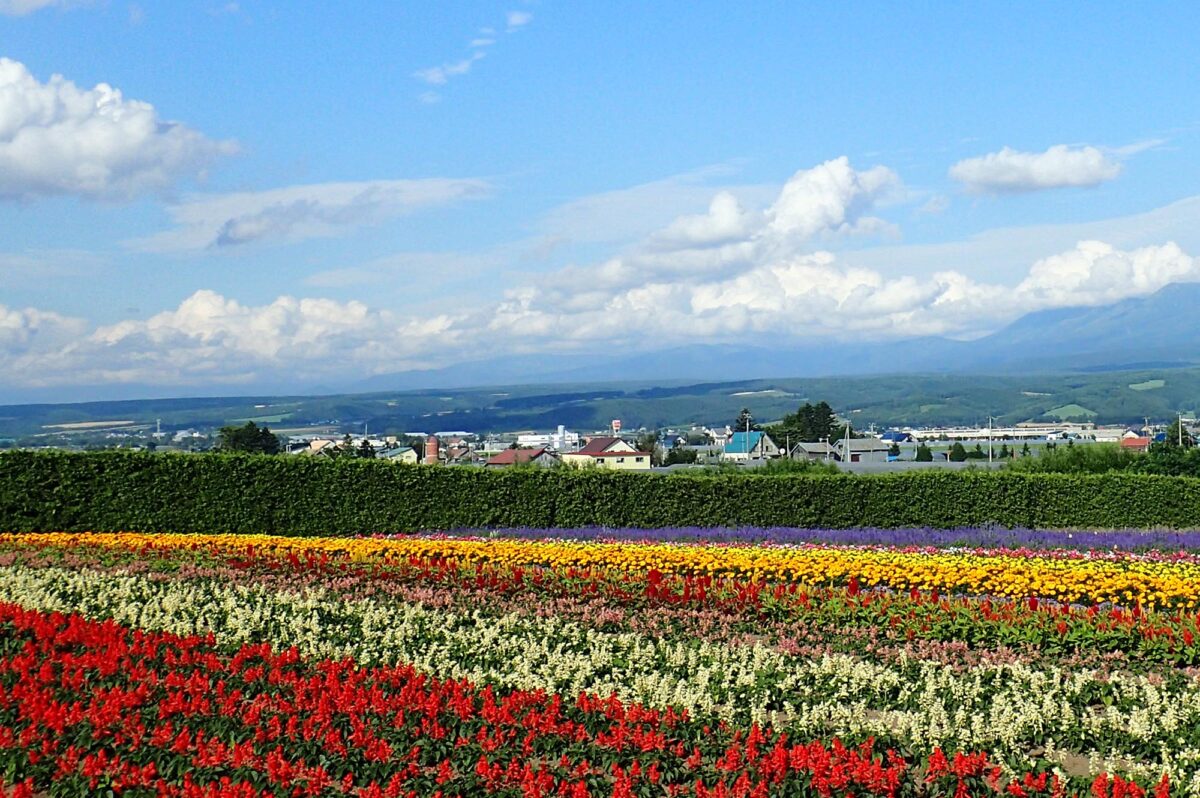I’m all geared up with snorkel and flippers, ready to jump off a boat beside a sea lion colony near Baja California’s Coronado Island. About 100 of them are barking their heads off. It’s deafening. I’m a little leery, as I’ve heard stories of sea lions elsewhere being less than welcoming. But my guide, Ivette Granados Marines, assures me that the local sea lions are friendly. They only bite rude people who stick Go Pros in their faces.
I let go of the boat and fall into the deep warm water. An enormous sea lion torpedoes under me, staring with round black eyes. Sure enough, I am watched but unbitten while snorkeling in the unreal turquoise waters of Parque Nacional Bahía de Loreto. Here’s what you should know before visiting the park for yourself.

The marine park
Parque Nacional Bahía de Loreto, which translates to Loreto Bay National Park, includes five uninhabited islands and 510,000 acres within the Gulf of California. The Mexican government established the park in 1996. Since then, it’s gained the added distinction and protection of being declared a Ramsar site in 2004 and a UNESCO World Heritage Site in 2005. Ramsar sites indicate internationally important wetland areas.

The Gulf of California, also called the Sea of Cortez, is the Pacific Ocean inlet between the Mexican mainland and the eastern coast of Baja California. I spent three days exploring Loreto Bay National Park and the nearby Baja town of Loreto.
Wildlife in the Sea of Cortez
Locals and tourists alike enjoy taking boats out to snorkel, swim, fish, dive, and kayak in the park. While the moniker “aquarium of the world” has made the area vital to the local tourism economy, the point of being a park is to protect the area’s many non-human inhabitants. In addition to friendly sea lions, other big mammals who swim here include dolphins, orcas, fin whales, and humpback whales. The world’s largest mammal, the blue whale, migrates through the park in February and March.

As we boated back from a glorious kayaking and paddle boarding excursion on Danzante Island, Ramon Arce told me about blue whales, his favorite Sea of Cortez animal. “They are huge,” said Arce, an elite kayaking guide with Sea Kayak Baja Mexico. “Sometimes when they show up and you don’t expect them, maybe you get scared for a few seconds. But then they just pass nearby.” While it’s against marine park rules to intentionally go whale watching in a kayak, sometimes they’ll come towards you, Arce said. “In February and March, it’s pretty common to see them.”

Each of the five islands — Coronado, Danzantes, Santa Catalina, Del Carmen, and Montserrat — has slightly different species of the same animals. Santa Catalina Island, the most remote, has seven endemic reptile species found nowhere else in the world. These include the leaf-toed gecko, the desert iguana, and a very disconcerting rattlesnake.
The critically endangered Santa Catalina Island rattlesnake lacks a functioning rattle. Instead, the buttonlike base of the snake falls off every time it sheds its skin, preventing a rattle from growing. “The snake doesn’t need that rattle,” said Granados Marines, a geologist by training who is now operations manager for the central-northern region of Visit Baja California Sur. “Why? Because no one on the island is going to attack the snake.” Uh, but isn’t their courteous warning one of the best things about rattlers?

The importance of algae
While few people would question the awesomeness of a huge creature like the blue whale, sometimes it’s the lower-profile organisms that make a difference. As we sit offshore in our boat, admiring Isla Coronado, Granados Marines tells us a story of the hero of the marine park: algae beds called rhodoliths.
“Those algaes are like the nurseries of the Gulf of California,” she said. If you cut into a rhodolith you can find up to 140 species of different eggs of fish, nudibranchs, shrimp, sea stars, and other critters, Granados Marines explained. “That was the motivation that the community wanted to create the marine park. To defend the bottoms of the sea here. Because without rhodoliths, we don’t have a place for some of the species of fish to put their eggs.”

Snorkeling the Sea of Cortez
While I love paddleboarding and kayaking, there’s nothing like being in the water with whatever animals live in the area or are passing through. After visiting the sea lion colony, we went ashore for some beach time. I spent my time in the water, cruising around looking for critters. Colorful king angelfish and surgeonfish are beautiful, but I especially enjoy the surprising fish. I got a shock when a long, tubular trumpetfish silently passed beneath me. And when I was examining some rocks on the sea floor, I realized one had eyes. It was a stonefish, an ambush predator that zaps its prey with highly venomous spines on its back!

If you go
The small town of Loreto is the best base for visiting the marine park. You’ll need an outfitter to take you to the islands on a boat. There are many choices, but both options I went with — Dolphin Dive Baja and Sea Kayak Baja Mexico — were excellent.
Loreto offers many lodging options, too. If you want to stay in the town square amid all the action (and near La Route bike and espresso shop), I recommend Posada de las Flores. It features an airy courtyard and rooftop pool. For a beachier experience, Hotel Oasis is right on the malecon, so you can gaze at the Sea of Cortez from your hammock.
Disclaimer: While this article was not sponsored, Outdoors Wire did visit Loreto on a press trip hosted by Visit Baja California Sur. As always, Outdoors Wire operates independently, and this doesn’t influence our coverage.






